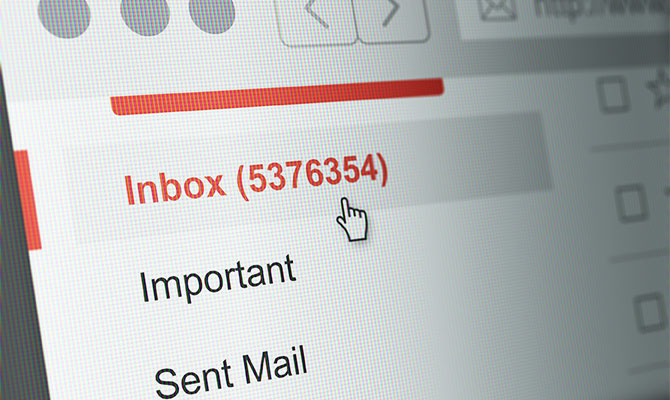
A couple of weeks ago both my assistant and I returned from time away on summer vacation. I had been to a wonderful family camp set near a lake in Quebec, with somewhat modest but adequate accommodations. My assistant had been away visiting her daughter in Australia, followed by some very relaxing time at a resort in Thailand. So while I was eating burnt marshmallows and avoiding mosquitoes, she was enjoying delicious Thai food with the ocean breeze in the air. Really, I wasn’t jealous.
And even though our vacations were very different, we both arrived back to work with the same problem: an enormous amount of email in our Inboxes.
We met to discuss this challenge that can often overwhelm many people, and I shared the following tips and strategies with her:
1. Prepare before you leave – There are two critical things that need to be done before you go away on vacation: try to have your Inbox as empty as possible, and block out time in your calendar for the very day you return (at least 1 to 3 hours or more depending on how long you are away, or typically how many emails you get), so you can begin to sort through the hundreds of messages that will undoubtedly be waiting for you. Of course, you also should set up an auto-responder to let people know you will be away.
2. Quickly delete all irrelevant emails – The day you return you will already have a scheduled time block to work through your emails. First of all go through all the emails quickly, only looking at the name of the sender and the subject. Any spam, irrelevant newsletters, sales solicitations, etc can be deleted immediately. This process cleans your inbox and also gives you a sense of the total quantity of emails you have to go through, and a very quick sense of the type of items you will need to deal with. At this stage don’t stop on messages that might appear to be important – keep moving quickly. And don’t worry about possible accidental deletions. If these do happen to occur, and the item was important, the sender will surely contact you again.
3. Make initial responses – Next you will make another pass through the remaining emails. Do this chronologically, either from most recent to oldest, or from oldest to most recent. It’s up to you. Read each email and ask yourself, “Can I respond to this message in 1 to 2 minutes?” If you can, then do it right then and there. Draft your response, send it, and move the message out of your inbox. If you can’t deal with the e-mail in 1-2 minutes, then move on to the next email. Don’t get stuck, move on. And don’t worry – we are coming back to those left over messages.
4. Plan more detailed responses and delegate – Next you will make a third pass through the remaining emails. These should now be the ones that might require more time or energy to deal with. This time around ask yourself, “Do I need to delegate this to another person OR do I personally need to spend more time answering this?” If it needs to be delegated to someone else, then forward it and explain what you require the recipient to do. If you need to spend time yourself, then delegate the email to a specific time block in your calendar either later that day, week, or month, depending on the nature of the item. An easy way to do that is to drop the email right into your calendar. In MS Outlook it is very simple: drag and drop the email from the list onto the calendar icon, and it automatically puts the text of the email and the subject into the calendar appointment. In Gmail: with the message open, you click “more” on the menu and “create event” and it also automatically puts the text of the email and the subject into a draft calendar appointment.
5. Follow through on your time blocked email responses – Since you put these emails into your calendar with all the details, you can be confident that you have all the information to inform your work and response. You can also be confident that nothing slipped through the cracks.
By following these five simple steps, by the end of your first day back to work you should feel very much caught up and your inbox should be empty. But if you want to go really extreme, you can employ an approach I heard on a Michael Hyatt podcast once. Before vacation, set up an auto-responder that states, “I am presently away on vacation. All emails sent during this time will be deleted. Please email me again upon my return on [date].” Then when you get back from vacation, simply delete all the emails, and voilà, you are now caught up.
Have a great vacation!